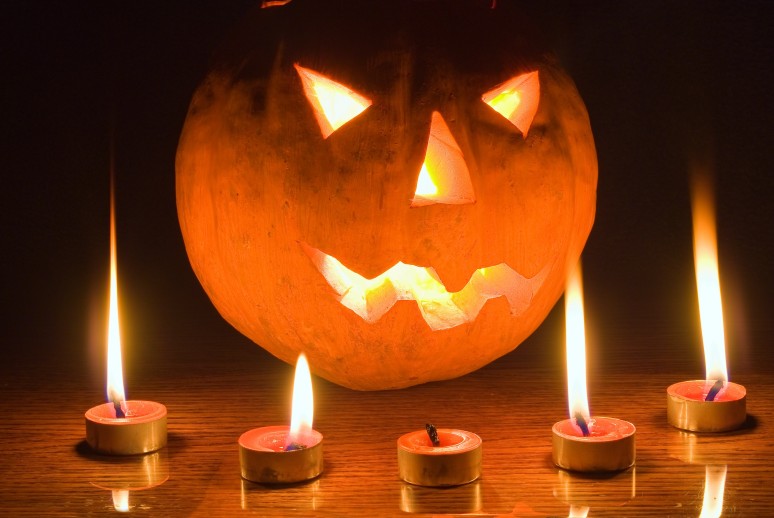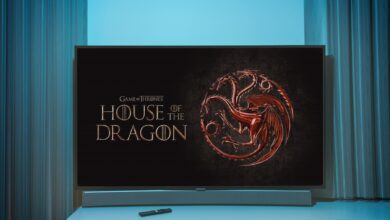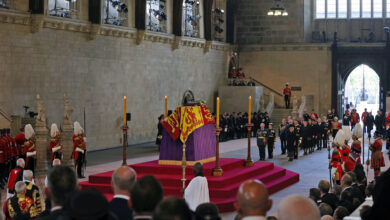
“Trick or Treat!” For kids, Halloween means candy and fun costumes. For many adults, Halloween means parties, Trunk or Treat celebrations, and the possibility of dressing up for fun. Many of us understand that Halloween is based on something called Samhain, but, we truly don’t know the history of this holiday.
What is Halloween? Every year, on October 31, we celebrate Halloween. For most of us, it’s a fun day. Some kids and adults enjoy watching scary movies, or perhaps a marathon of the Halloweentown movies. A great deal of the fun is dressing up, and candy, of course. However, Halloween is actually based on an ancient Celtic festival known as Samhain.
Read More »Samhain itself was a festival during which people dressed in costumes (to fool the souls of the dead) and gathered around bonfires. At one time, this was said to be celebrated on May 13 of the year; food would be prepared in an effort to appease the dead. When Pope Gregory moved the date of All Saints’ Day, naturally, the day before became All Hallow’s Eve, which is what we have come to know as Halloween.
Now, let’s look at something interesting. Halloween is typically thought of as sort of a “morbid” holiday. Lots of Americans have heard the gist of Samhain, and people do tend to celebrate the “spooky” nature of the holiday. However, the name “Halloween” itself isn’t quite that morbid after all! “Hallow” means “holy.” “Eve” became “een” due to the way most people pronounced the word “eve” at the time. So, yes, the first folks who celebrated All Hallow’s Eve did so because they lived during a time where the old pagan ways were dying and Christianity was taking hold.
All Saints’ Day was meant to be a day that honored the ancestors who had passed and gone on to Heaven. However, Samhain involved the possibility of angry souls allowed to return. The tradition of Samhain held that on that day, the “veil” between the world of the living and the world of the dead became very thin. These souls could return and destroy crops or wreak other havoc among the living.
The Celtic priests conducting a Samhain ritual would dress in costumes, usually the skins and heads of dead animals. During these bonfires, some crops would be burned to the Celtic gods; some animals were also sacrificed. After the ceremony was over, citizens would re-light their hearth fires (before the ceremony they would put out these fires; this was a way of sending out the old and ushering in the new).
Of course, the Druids were conquered by the Roman army sometime during the early first century. At this time, the Celtic festival of Samhain would begin to mesh with some Roman customs. In late October, the Romans would honor their dead. Soon after, they would pay homage to Pomona, the goddess of fruit and trees. These two days became mixed in with Samhain as the Romans intermarried with Celtic people. Our tradition of bobbing for apples likely comes from the combination of Samhain with some Roman traditions.
Celtic Samhain traditions mixed with some Roman influence were practiced for at least eight centuries. Pope Gregory II moved the celebration of the saints from May 13 to November 1; he also declared November 2 as All Souls’ Day. Many today feel that the Pope did so in an effort to rid his parishioners of the Samhain celebration.
All Souls’ Day became a day that honored all people’s ancestors; it also held on to many of the traditions of Samhain. Huge bonfires would be lit, and huge parades moved throughout every city or village. Participants dressed in cartoons. However, at this time, the costumes varied between devils, angels, and “saints.” Eventually, All Saints’ Day and All Souls’ Day came to be celebrated on November 1. This is how October 31 came to be Halloween, as that was “All Hallow’s Eve.”
You might be surprised to learn that Halloween had a tough beginning as an American holiday. The early colonists were Protestants; many of whom had undergone severe persecution at the hands of the Catholic Church. It’s no wonder that they didn’t want to celebrate the Holy Days designated by the Church. However, in Southern colonies such as Maryland, Halloween began to be celebrated.
It was in America that Halloween began to take on the identity of the day we celebrate today. Halloween took place after the harvest was complete. The original American celebrations were known as “play parties,” where participants would dress up and bob for apples as well as carve pumpkins. During the play parties, food was a big part of the event. People would often dance and sing and share stories of their deceased loved ones. It is likely the tradition of sharing scary stories also had its origins here.
Even though Halloween festivities were present in colonial America, it was not until the nineteenth century when many Irish immigrants came to America. With them, they brought the traditions behind All Hallow’s Eve – after all, their ancestors had celebrated the event for centuries! This led to the nationalization of celebrating Halloween. At the same time, Halloween was still morphing into the holiday we currently recognize.
By the end of the 1800s, Halloween celebrations had become less of the “play parties” and more of a community event where people celebrated the foods of the harvest and played games. Costumes were still present, however. By the 1930s, parents were encouraged to take the “spooky” element out of Halloween while still celebrating the harvest and fun games. Trick or treating became immensely popular due to these changes, and the vandalism and other nefarious practices that tended to take place during Halloween began to wane.
Today, kids of all ages enjoy dressing up and seeking out “treats.” Halloween is the second largest holiday commercially after Christmas.
When Pope Gregory deemed November 2, All Souls Day, he was likely trying to replace





